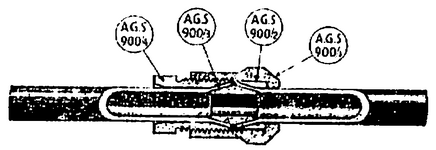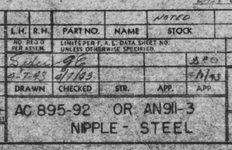MiTasol
Captain
Nice link Denys so it saves me trying to demonstrate with photos the differences in AN and AC fittings.
Attached are couple of references to US prewar civil and military aircraft fittings that may be of interest to some. Note the Fletcher handbook is using the Parker part numbers like used on the DC-2 but the DC-2 used the "triple tube coupling" system as does the AN system. The AC may have used the "standard" coupling for some installations but I have never seen it used on aircraft.


Attached are couple of references to US prewar civil and military aircraft fittings that may be of interest to some. Note the Fletcher handbook is using the Parker part numbers like used on the DC-2 but the DC-2 used the "triple tube coupling" system as does the AN system. The AC may have used the "standard" coupling for some installations but I have never seen it used on aircraft.


